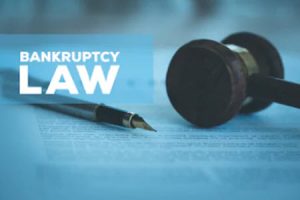Five Quick Ways To Help Put Bankruptcy Behind You

In most cases, filing bankruptcy is a once-in-a-lifetime last resort. Unfortunately, a significant number of debtors find themselves in the same situation a few years after they receive their discharge orders. About 10 percent of consumer bankruptcy petitioners are repeat filers. No one is immune to the financial crises, like job loss and serious illness, that prompt most bankruptcy filings. However, following some basic tips greatly reduces the risk of a repeat filing.
Normally, commercial enterprises encourage repeat business. But bankruptcy is different. So, a Chicago bankruptcy attorney does much more than fill out forms and represent you in court. An attorney is also committed to your long-term financial recovery. Bankruptcy is an important part of this process. But it’s not the only part of it. We’ve learned that people who stick to a post-bankruptcy plan have often forgotten that they filed when these records fall off their credit history reports.
Designate No-Spend Days
This step is an important part of planning your work and working your plan. This formula is very effective in most cases.
Designating periodic no-spend days, such as every Tuesday or Thursday, helps former bankruptcy debtors plan bill payments and errands like buying groceries. Furthermore, a predetermined no-spend day reduces impulse spending.
Furthermore, this step is about the closest thing to planning a monthly budget. It’s our experience that very few people have written budgets, and even if they do, they do not adhere to them very well.
Open a Savings Account
Statistically, when most people miss their monthly bills, they miss them by less than $500. So, even a modest savings account could make a huge difference in a tight month. A somewhat larger savings account could enable many people to weather some short-term financial storms.
A touch-free savings account is usually best. Do not open a savings account as a companion to your checking account. Open it at a different financial institution. Furthermore, do not get an ATM or debit card and, if possible, limit online access to the funds.
Borrow Money Responsibly
Your credit rating does not measure your ability to pay cash for everything. It measures your ability to responsibly use credit. So, responsible use quickly raises your credit score.
Many former bankruptcy debtors obtain secured credit cards with low spending limits. They charge something every month, pay the bill every month, and watch their credit scores improve every month.
Build a Financial Reserve
This step harkens back to opening a savings account, which was discussed above. Many people make thirteen payments a month on home loans, car loans, and other secured debts.
Most people do not miss the extra $50 or so a month. If the extra money goes toward the UPB (Unpaid Principal Balance), the interest savings could be significant. Additionally, it’s easier to skip a payment when things get tight or convince a creditor to defer a payment or two.
Be Upfront
There’s no hiding from bankruptcy. Your filing is public record. So, creditors and pretty much anyone else will eventually find out about the prior filing. How they find out is up to you.
Before potential lenders check your credit history report, tell them about the prior filing. Things will go a lot better if they find out from you instead of finding out the hard way. Also, bear in mind that if the creditor refuses to do business with you, there are other lenders out there.
Reach Out to Savvy Cook County Lawyers
No matter what kind of financial problem you are having, bankruptcy could be a way out. For a free consultation with an experienced bankruptcy attorney in Chicago, contact the Bentz Holguin Law Firm, LLC. We routinely handle matters in Illinois and Indiana.
Resource:
debt.org/bankruptcy/statistics/


